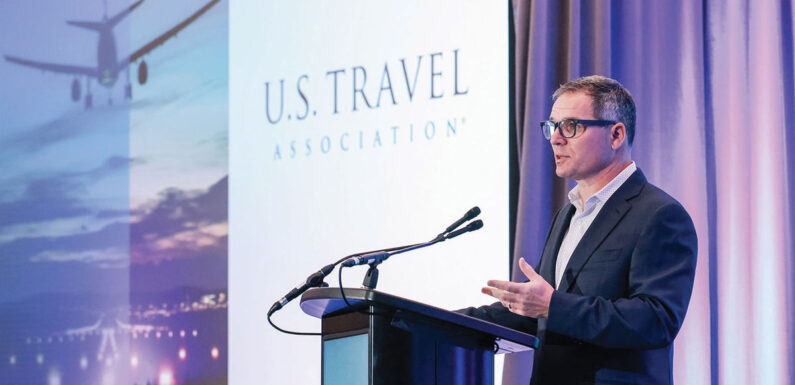
SAN ANTONIO — It’s been a year since the U.S. Travel Association first identified the soaring visa wait times as a major impediment to inbound travel recovery.
Progress in getting those waits down has been slow since then, and the problem seemed no less vexing to destination representatives here at U.S. Travel’s annual IPW conference. But a meeting between destination leaders and officials from the U.S. State Department at the event is giving travel leaders hope that the backlog will soon be addressed.
U.S. Travel CEO Geoff Freeman said that the waits for first-time visas, which as of May 23 averaged more than 500 days in the top 10 visa-requiring markets worldwide, “are hurting the American economy.”
“The situation is untenable,” he told attendees. “We have challenged the State Department to get wait times down to under 30 days at every U.S. consulate around the world. That is what we believe is acceptable, and we will continue to remain focused on achieving that goal.”
Quite a few destination representatives lamented lack of progress in reducing the wait times. But in an interview, Freeman indicated optimism.
After the meeting with State Department leadership, Freeman said, “their tone had changed for the better.”
“Here’s what’s changed over a year: They now acknowledge there’s a problem. And that really is the first step to actually doing something about it,” he said.
Freeman said there are three main reasons for the backlog: staffing shortages at embassies, an absence of creative approaches to solve the delays and a lack of desire to do something about it.
“Coming out of the pandemic we didn’t necessarily sense the desire to address the situation,” he said. “All of those things are beginning to change. Staffing is turning around, albeit slowly, and they are doing things that are creative — they spoke of SWAT teams and the ability to move people around. Something has broken the logjam where there is degree of seriousness now.”
Still, wait times of 500 to 700 days “aren’t going to be down to 30 overnight,” he said. “There is a backlog that is going to take them six to 12 months to work through. I don’t think we’re having this conversation a year from now, but it’s not going to happen overnight.”
Eager for international visitors
For destinations waiting for the lucrative international inbound travelers to return, the visa backlog is tough pill to swallow.
International travelers are a critical market in places like New York, where they typically represent 20% of volume but 50% of spending. Fred Dixon, CEO of New York City Tourism + Conventions, said the city’s 11 million international visitors in 2022 represented 81% of its prepandemic numbers.
Elliott Ferguson, CEO of Destination DC, said the international market makes up only 7% of Washington’s tourists but contributes 27% of visitor spend.
Visit Florida CEO Dana Young said it is a “huge issue” for the state, where international visitors are still down 23% from 2019. Six of its top 10 markets are Latin America countries that are not members of the Visa Waiver Program, including Brazil and Mexico, she said, which are both affected by the visa delays.
Those first-time visitors are hugely important in driving future demand, Young added.
“They promised that a year from now we would not still be talking about this issue,” she said of the meeting with State Department officials. “So that gives me hope.”
There is still frustration with the process. Young said that wait times in Argentina are down to 78 days, but when she asked officials how they achieved that, they said they didn’t know. “Well can you find out? Because it’s working,” she said.
Chris Thompson, CEO of Brand USA, doesn’t think State Department officials “get enough credit.”
“Right now they’re processing more visas than ever in their entire history,” he said. “Coming out of Covid they were understaffed and they shut down and they had to restaff and gear back up. In that regard they’re doing an exceptional job, and they’re doing more than they’ve ever done. There is so much more demand.”
Still, he said that officials at the meeting acknowledged “it’s not good enough. They think they’re gonna be out from under the major backlogs in six months. So we’re hopeful.”
Source: Read Full Article









